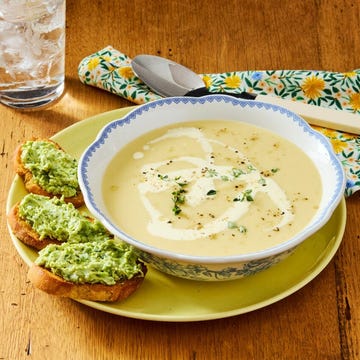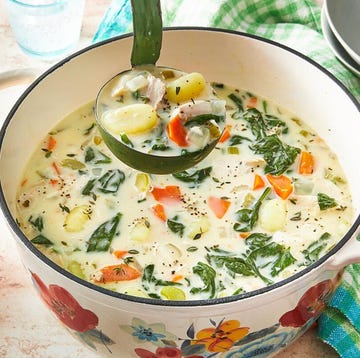1Lemons
 Tom Kelley//Getty Images
Tom Kelley//Getty ImagesProbably the most versatile of the winter fruits, lemons add zest to your cooking during the dreary months. Though they are available all year round, look for varieties that are more seasonal like the Meyer lemon, which is a hybrid of a regular lemon and a mandarin orange. Available from December through May, they would make a delicious lemon curd.
2Apples
 LauriPatterson//Getty Images
LauriPatterson//Getty ImagesPicking apples might be best associated with fall, but they are some of the most sturdy fruit available. Because of the waxed outsides and superior storage technology, you can buy crisp, sweet apples all winter. If your farmers' market is open, go for the most regional variety you can find and store them properly.
Advertisement - Continue Reading Below
3Grapefruits
 Stockbyte//Getty Images
Stockbyte//Getty ImagesSimilar to lemons and oranges, grapefruit are available year-round, but are best from January through the spring. Ruby red tend to be a lovely balance between sweet and tart, though you could certainly sprinkle them with a little sugar if need be. The only real decision is the best way to slice it!
4Pomegranates
 Thanasis Zovoilis//Getty Images
Thanasis Zovoilis//Getty ImagesAct fast, because of all the winter fruits, pomegranates are usually only seen in stores through the end of January. But oh, are they worth seeking them out and knowing how to deseed them. Their sweet-tart taste are great in all kinds of recipes from main dishes to desserts and cocktails.
Advertisement - Continue Reading Below
5Oranges
 Verdina Anna//Getty Images
Verdina Anna//Getty ImagesMuch like lemons, we're used to seeing oranges all year round. But they are sweetest from November through May, and unique varieties like the stunning blood orange will be easier to find. What a colorful twist they would make in sweet recipes like orange scones!
6Kumquats
 MAIKA 777//Getty Images
MAIKA 777//Getty ImagesPerhaps not as popular as the other fruits on this list (for now!), kumquats are worth a try. A type of citrus, these tiny little oval fruits are a burst of tang and can be eaten with the peels still on.
Advertisement - Continue Reading Below
7Pears
 Tom Kelley//Getty Images
Tom Kelley//Getty ImagesLike apples, there are so many varieties of pears and most begin their seasons in the later summer and fall. The exact seasons vary quite a bit depending on the type, but the most common winter pears you will find are anjou, bosc, and comice.
8Persimmons
 Sirichai Asawalapsakul / EyeEm//Getty Images
Sirichai Asawalapsakul / EyeEm//Getty ImagesLike pomegranates, persimmons have a relatively short winter lifespan in markets through the end of January. They have a similar look to tomatoes, but taste more like apricots. The hachiya variety are better when ripe and are great for baking, while the fuyu variety are great raw.
Advertisement - Continue Reading Below
9Tangerines
 Natalia Ganelin//Getty Images
Natalia Ganelin//Getty ImagesTalk about snackable! Tangerines, much like their cutie cousins the clementines, are known for their thin skins, easily segmented bodies, and sweet flavor. They are best from November through April.
10Kiwis
 Nichifor Grigore / 500px//Getty Images
Nichifor Grigore / 500px//Getty ImagesThere's nothing quite like a kiwi to add a distinct pop of color and flavor to any breakfast, snack, or dessert like kiwi pie. Thanks to California, we can grab perfectly ripe ones from October through May. Hint: try a spoon instead of a knife to scoop them out when they are ripe.
Advertisement - Continue Reading Below
11Quinces
 Westend61//Getty Images
Westend61//Getty ImagesEver wonder what that fruit that sort of looks like a bumpy cousin to an apple or pear is? It's a quince! It's in the same family as both with a mild yet complex flavor and in season through the fall and winter. And oh, you can't eat them raw but they are worth a simmer to snack on for dessert!
12Passion Fruits
 Lucia Chirila / 500px//Getty Images
Lucia Chirila / 500px//Getty ImagesThanks to California and Florida, we can enjoy this tropical fruit in the winter. When the skin is a little wrinkled, that's when you know your passion fruit is ripe. All you have to do is slice it in half and scoop out the tart pulp to feast on.
Advertisement - Continue Reading Below
Advertisement - Continue Reading Below
Advertisement - Continue Reading Below

























